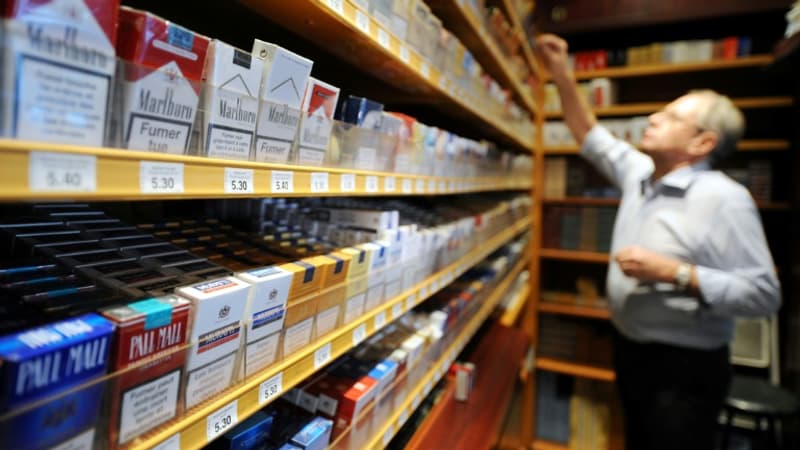The study is spoken a lot since the figure is impressive. According to a KPMG report commissioned by the tobacco giant Philip Morris International (PMI), about 49% of cigarettes sold in France do not come from authorized sales channels and, therefore, come from the black market or abroad.
Precisely, 24.7 billion cigarettes were bought last year outside the tobacco offices, of a total of 49.9 billion cigarettes, an increase of 13% for a year and “60% growth compared to 2020”.
Worse, according to the study, France now concentrates “almost half of the illegal volumes of the European Union, or 18.75 billion illegal cigarettes consumed.”
For Philipp Morris, the explanation is clear as rock water: the continuous and massive increase in cigarette packages diverts to smokers from official circuits.
+360%: the increase in average tobacco prices since 2000
“Adult smokers do not stop smoking, but they overlook the high price of cigarettes to preserve their purchasing power, by diversifying their supply channels. Now, the parallel market is the standard. Our tobacco taxes, which are among the highest in the world, have only encouraged the Smoker to resort to very economical illegal products,” reading.
Since 2000, according to Inject The average tobacco price increased almost 360%.
In Hollow, the American giant, therefore, disputes the relationship between price increases and a significant fall in consumption. And ask about “the effectiveness of French politics to fight smoking.”
This study is virtually challenged by the alliance against the Tobacco Association (ACT).
“This figure, which is not based on any scientific methodology, is only aimed at one goal: to make public health policies to affirm that the increase in tobacco products would result in an explosion in the black market,” said a statement.
According to her, “the increase in tobacco prices has not changed the way in which smokers are obtaining: according to official data (Public Health France and Ofdt), almost 80% of smokers continue to buy their cigarettes from a tobacconist, a stable figure for more than 10 years. As for the parallel market (including legal and illegal purchases), it represents between 10% and 20% 10 years.
Purchases in the street or in the feature, on the other hand, do not exceed 1% during the 2014-2022 period, the law adds.
“The methodology used, similar to that of the previous editions, arouses many criticisms of university experts, who denounce important biases, as well as the lack of transparency by the KPMG company,” mocks the association.
Consumption is at a historically low level
“In addition, during the dissemination of this report, Philip Morris International deliberately maintains a confusion around the term” parallel market “, suggesting that any purchase made outside the official network of tobaconists would be illegal, while in reality, a consumer can legally buy tobacco abroad within the limit of authorized quotas,” he continues.
In addition, according to the figures of the national president of the Confederation of Bortes, Philippe Coy, from 30 to 40% of tobacco sold in France would come from the networks parallel to those of the tobaconists, from 9 to 19 points less than the figure presented by Phillip Morris.
Actually, the decrease in consumption is confirmed. Ofdt and public health in France completed their joint study, observing a decrease in daily smoking in France. Consumption is even a historically low level.
According to the annual evaluation of the French Observatory of Addictive Drugs and Trends (OFDT), the network of about 22,800 French tobaconists registered a sharp fall in tobacco volumes sold last year: approximately 12% compared to 2023.
Source: BFM TV


